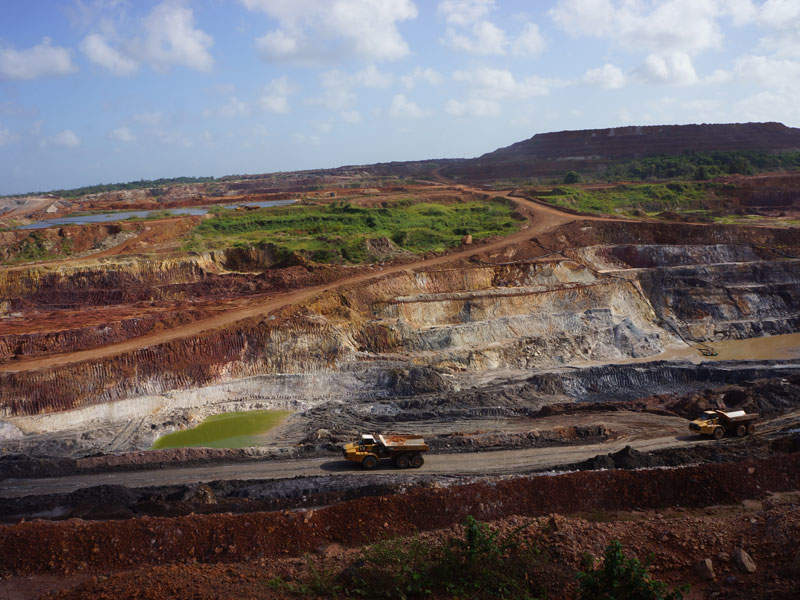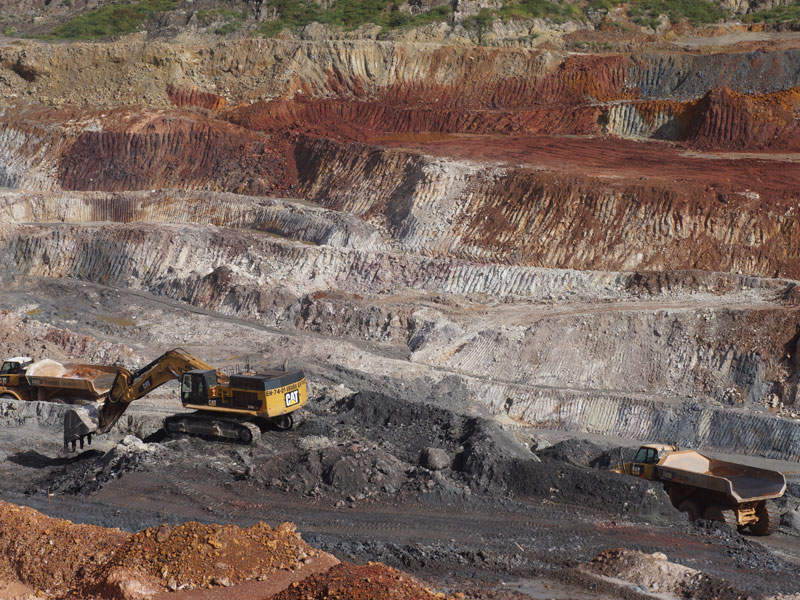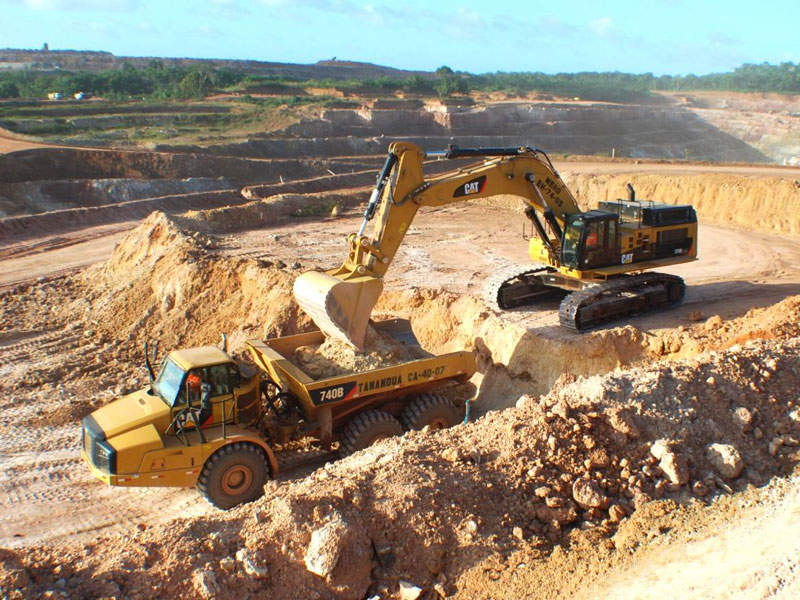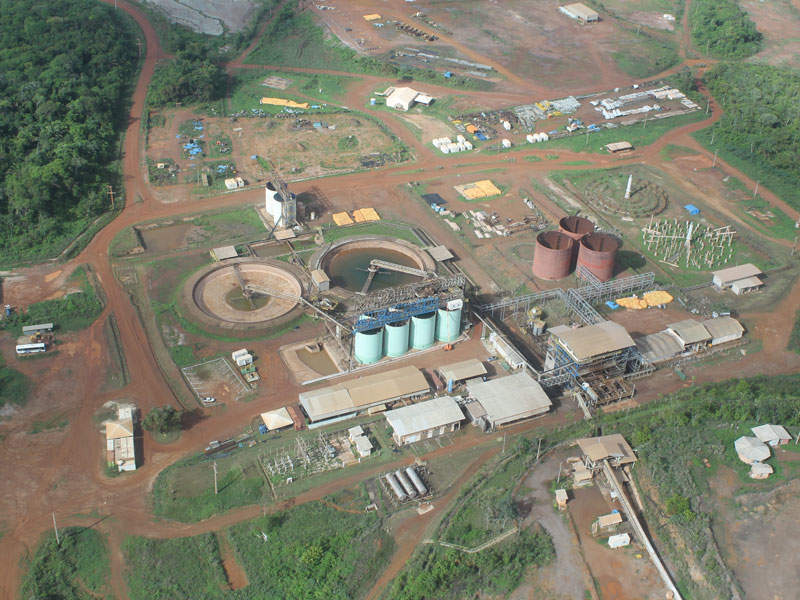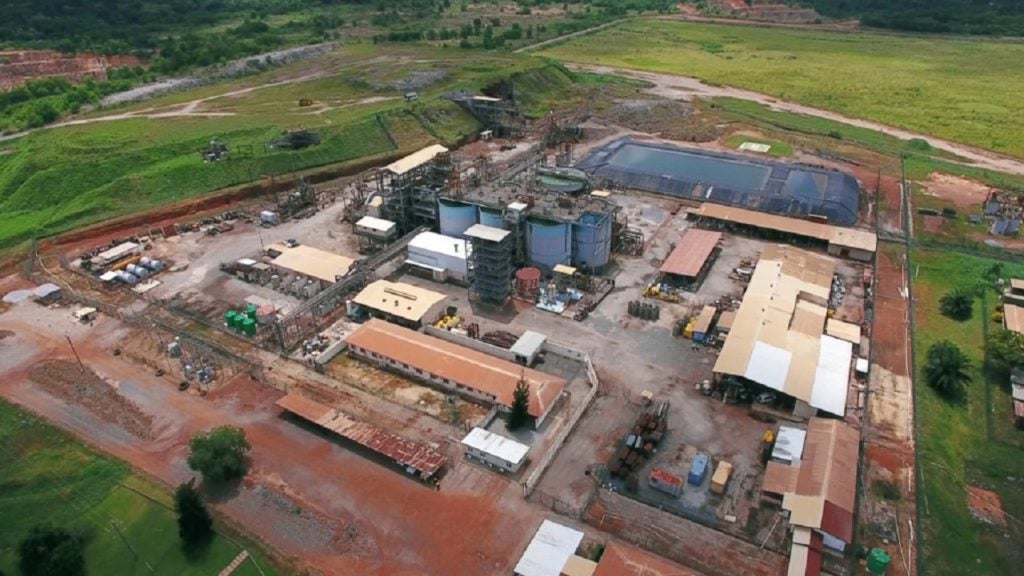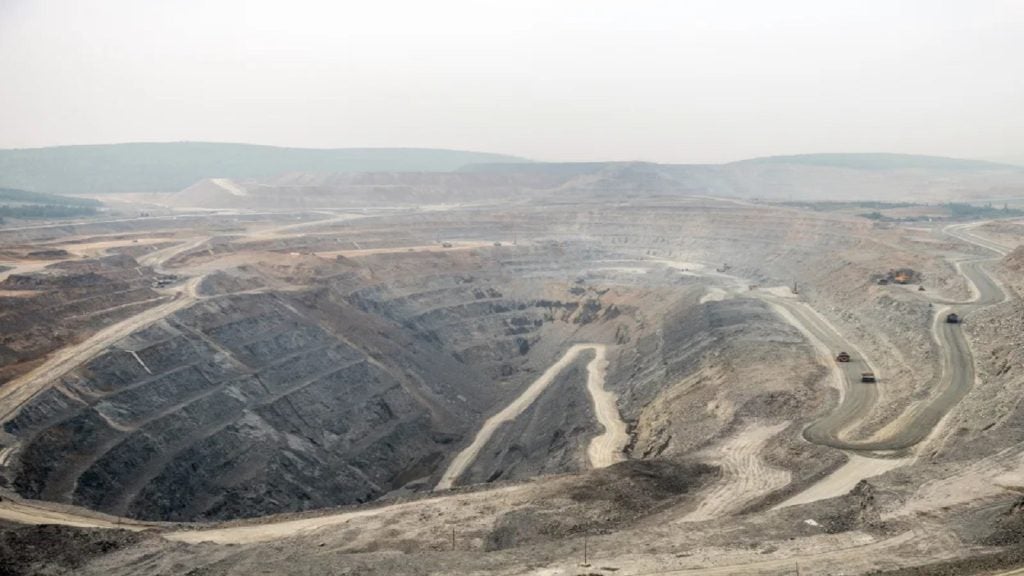The Aurizona Gold Mine, located within the Maranhão state in north-eastern Brazil, is owned by Mineracão Aurizona S.A. (MASA). Trek Mining subsidiary Aurizona Goldfields Corporation (AGC) owns MASA.
Trek Mining signed a definitive agreement to combine its business with NewCastle Gold and Anfield Gold and formed a new company called Equinox Gold in October 2017.
Extending over approximately 223,000ha, the gold property includes a developed mine camp, past-producing open-pit operation, processing plant, and associated infrastructure.
The mine was operated from 2010 to September 2015, following which the mining and processing operations were suspended and the mine was put on care and maintenance. Additional geological exploration drilling, metallurgical and engineering studies were undertaken to develop a new mine plan. One of the primary changes was the incorporation of a new hard rock crushing and grinding circuit with a capacity to treat 8,000tpd of all ore types.
The project’s pre-feasibility study was completed in September 2016 and the feasibility study was completed in July 2017. Early works construction commenced in the third quarter of 2017, and first gold pour from Aurizona is expected by the end of 2018.
With an expected investment of $146m, the mine is forecast to produce an average of 136,000oz of gold a year during its initial mine life of 6.5 years, upon reopening.
Geology and mineralisation
The gold project is located within the São Luis Craton (SLC), a Precambrian continental crust located between Pará and Maranhão states in northern Brazil. The SLC comprises a metavolcanic-sedimentary succession (Aurizona Group), subordinate volcanic rocks and several granitoid suites.
The Aurizona Group and the Tromaí Intrusive Suite along east-northeast trending shear zones hosts the project, which comprises two shear-hosted gold deposits, namely Piaba and Boa Esperança.
The lithological trend at the two deposits strikes east-northeast, with a steep north-northwest dip.
With a strike length of 3.3km, the Piaba deposit is classified as a tabular auriferous zone hosted within the metavolcanic-sedimentary rocks of the Aurizona Group. It is hosted in quartz-diorite rocks with diorite in the hanging wall and chemical-carbonaceous metavolcanic-sedimentary rocks in the footwall.
Primary gold mineralisation at Piaba is hosted by sheared and veined quartz-diorite, while the auriferous zone is associated with intense hydrothermal alteration and quartz veining.
Gold mineralisation at the Boa Esperança deposit is related to increased silicification- sulphidation-sericitisation-albitisation and carbonation alteration.
Reserves
The project is estimated to contain mineral reserves of 19.8Mt graded at 1.52g/t gold, for estimated contained gold of 971,000oz. The total resource base is estimated at 28.3Mt graded at 1.57g/t gold for contained gold of 1.43Moz (inclusive of reserves).
Mining at Aurizona
A conventional open-pit mining method, involving truck and excavator/front-end loaders, will be applied at the Aurizona gold mine. Pre-production mining activities commenced in April 2018 and ore stockpiling started in July 2018.
The open-pit mine is categorised into three areas, namely Piaba main, East pit, and Boa Esperança pit. Primary mining activities will take place at the Piaba main pit, which is further divided into eight phases with Phase 7A being an internal ramp phase.
The Boa Esperança area will act as a water storage facility.
Processing of ore from Aurizona
The processing plant at Aurizona will have a capacity to process 8,000tpd of all rock types through the application of conventional gravity concentration and leach/CIP (carbon in pulp) cyanidation processes.
Run-of-mine (ROM) ore will be trucked to the plant site and will either be directly dumped into a hopper or to the stockpiles on the storage pad. The crushing circuit, which will consist of a vibrating feeder, a jaw crusher and apron feeder, will crush the product to a P80 size of 150μm.
The crushed ore will pass through a conveyor to a 70t surge bin and then be forwarded to the SABC grinding circuit, where the particle size is further reduced to P80 100μm.
The SAG mill in the SABC circuit will be in a closed circuit with a pebble crusher, while the ball mill will be in a closed circuit with cyclones.
Some portion of the cyclone underflow will be forwarded to two centrifugal gravity concentrators. The intensive leach unit will solubilise the gold from the gravity concentrate, while the gold in the pregnant solution will be recovered through electro-winning.
The cyclone overflow from the SABC circuit will flow by gravity to the pre-leach thickener, where the slurry will be thickened for downstream cyanidation. The underflow of the thickener will be cyanide leached in the upgraded leach/CIP circuit to recover the remaining gold.
The loaded carbon from the CIP circuit will be washed by diluted acid solution and eluted by the Anglo American Research Laboratory (AARL) elution process.
The gold in the pregnant solution will be recovered by electro-winning, which will be combined with the gold sludge from the intensive leach circuit and smelted to produce gold doré bullion.
Infrastructure facilities at Aurizona
The Aurizona Gold Mine will use the existing access roads, water and accommodation facilities available at the mine site.
Power supply for the mine is currently provided by Companhia Energética do Maranhão (CEMAR) from its grid. In addition, three connected 2.5MVA generators at the mine site will act as a back-up.
Two substations located at the Aurizona plant site and Manaus do Maranhão, 46km from the project, will also be upgraded.
Financing
Trek Mining has entered a definitive credit agreement with Sprott Private Resource Lending in December 2017 for providing an $85m (C$109m) secured project credit facility for developing the Aurizona gold mine.
The company has implemented the transaction through its wholly-owned Canadian subsidiary Aurizona Goldfields Corporation.
Key players involved
U&M Mineração e Construção was awarded the mining contract for the Aurizona gold mine in March 2018.
Lycopodium Minerals Canada conducted the pre-feasibility and feasibility studies for the Aurizona Gold Mine.
SRK Consulting (Canada), BVP Engenharia/Walm Engenharia e Tecnologia Ambiental (BVP/Walm), and AGP Mining Consultants provided input to Lycopodium for the feasibility study.
Trek Mining awarded the engineering, procurement and construction management (EPCM) contract for Aurizona to Ausenco Engineering Canada.

